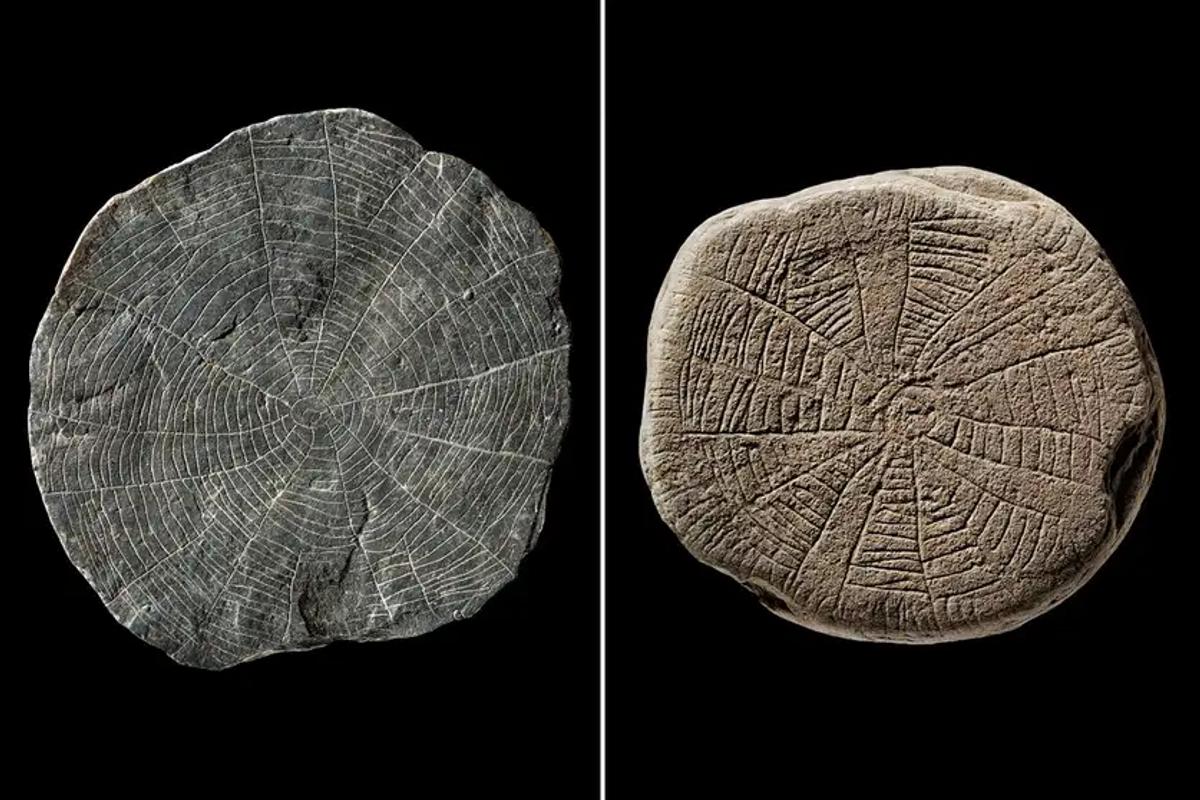Five thousand years ago, a massive volcanic eruption dimmed the sun over northern Europe, causing a Neolithic Danish community to offer sun stones in the hope of bringing back the light and saving their crops. Archaeologists discovered these enigmatic ancient stones on the island of Bornholm, 150 km south-east of Copenhagen, and have now used environmental data to link the timing of their burial with the eruption.
“As many of the engraved stones display sun and field motifs it was obvious to see the depositions of such imagery as fertility offerings made to enhance the yield of the fields and an attempt to evoke the darkened sun,” says the archaeologist Rune Iversen, an associate professor at the University of Copenhagen and a joint first author of the study published in the journal Antiquity. “Since the deposition of the engraved stones represented a single or a few contemporary depositional events around 2900BC, coinciding with the volcano eruption, we made the connection and linked the depositions to the eruption.”
Unique to Bornholm island, archaeologists discovered the first sun stones at the site of Rispebjerg in 1995, with the majority coming to light between 2013 and 2018 at Vasagård, 10km away. In total, over 600 engraved pieces have been unearthed, all dated to 2900 BC. Previous interpretations saw the stones as calendars or game pieces, but Iversen now argues that they were “sown” into ditches, like grain into the ground. “The idea behind it could be that sowing images of the sun and the fields would help ‘reboot’ the agricultural production and make the crops grow again and the sun shine,” he says.
Based on environmental studies, the 2900BC volcanic eruption is the 15th most powerful known from the Holocene—our current geological era—but its exact source remains a mystery. “We don’t currently know where the volcano eruption took place, it can be detected in both the Greenlandic and Antarctic ice cores so presumably around the equator somewhere, but it definitely affected central and northern Europe as well as the US,” Iversen explains.
Although the study cannot show how the eruption impacted people elsewhere in Europe, the event coincided with several other crises indicative of a wider “Neolithic decline,” which probably included plague, population decline, and widespread reforestation. “This was followed by profound cultural and populational change as new societies appeared with the influx of people from the steppe north of the Black Sea into Europe,” Iversen says. Written records from the Mediterranean World describe the impact of a similar eruption in 43BC, now known to have occurred in Alaska and to have been of a comparable magnitude to the 2900BC event. This caused over two years of unusually cold weather, crop failures, famine, and disease.
“As always new questions emerge,” Iversen says. “We would really like to know where the volcano was located and how much of Eurasia it actually affected—could it, for example, have influenced (or even caused) the migration of steppe herders into Europe during the early third millennium BC? If it impacted the life on the steppe, it could be a potential driver for these migrations, which we know from ancient genomics totally changed the genetic landscape of Europe.”


